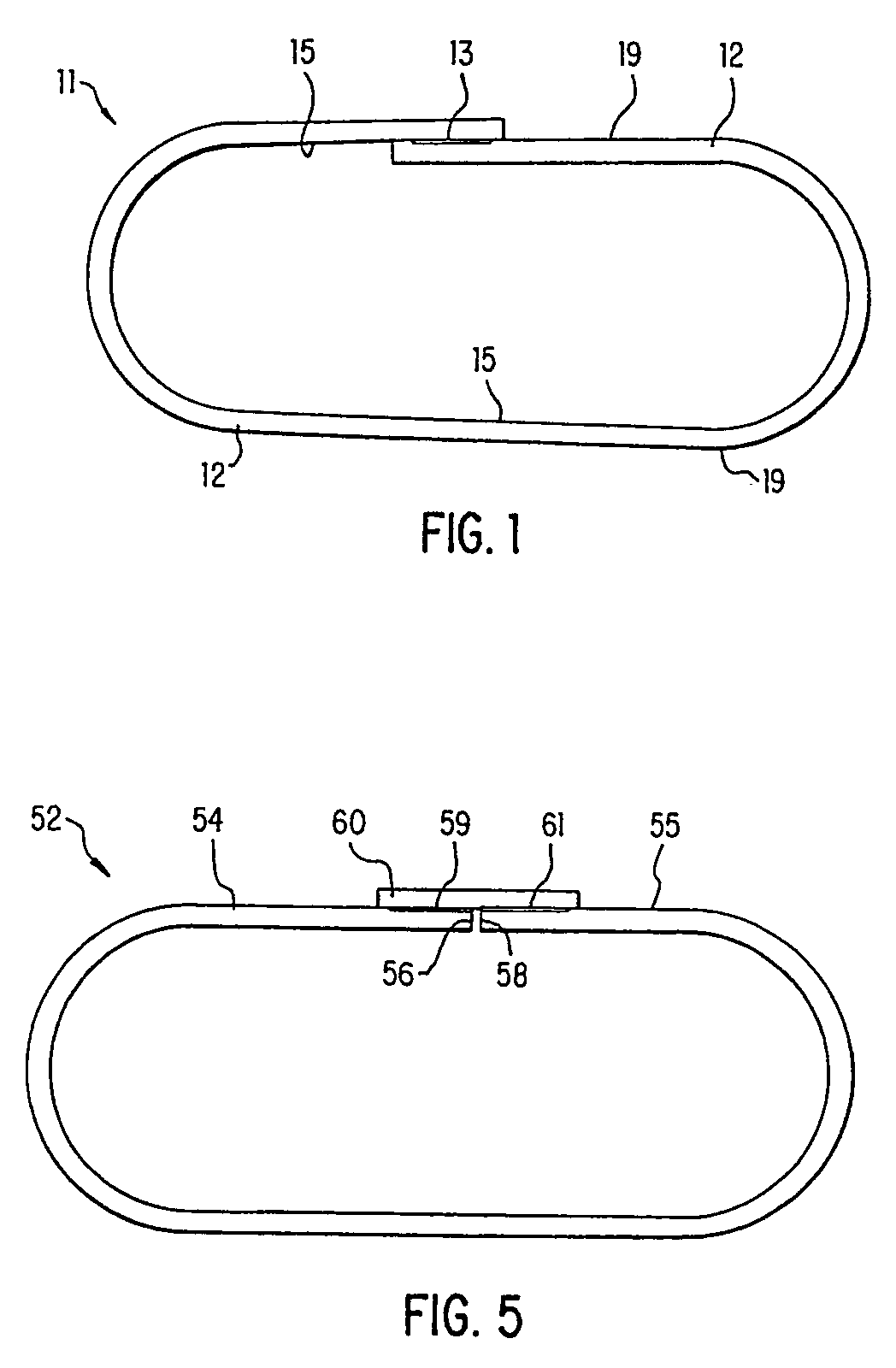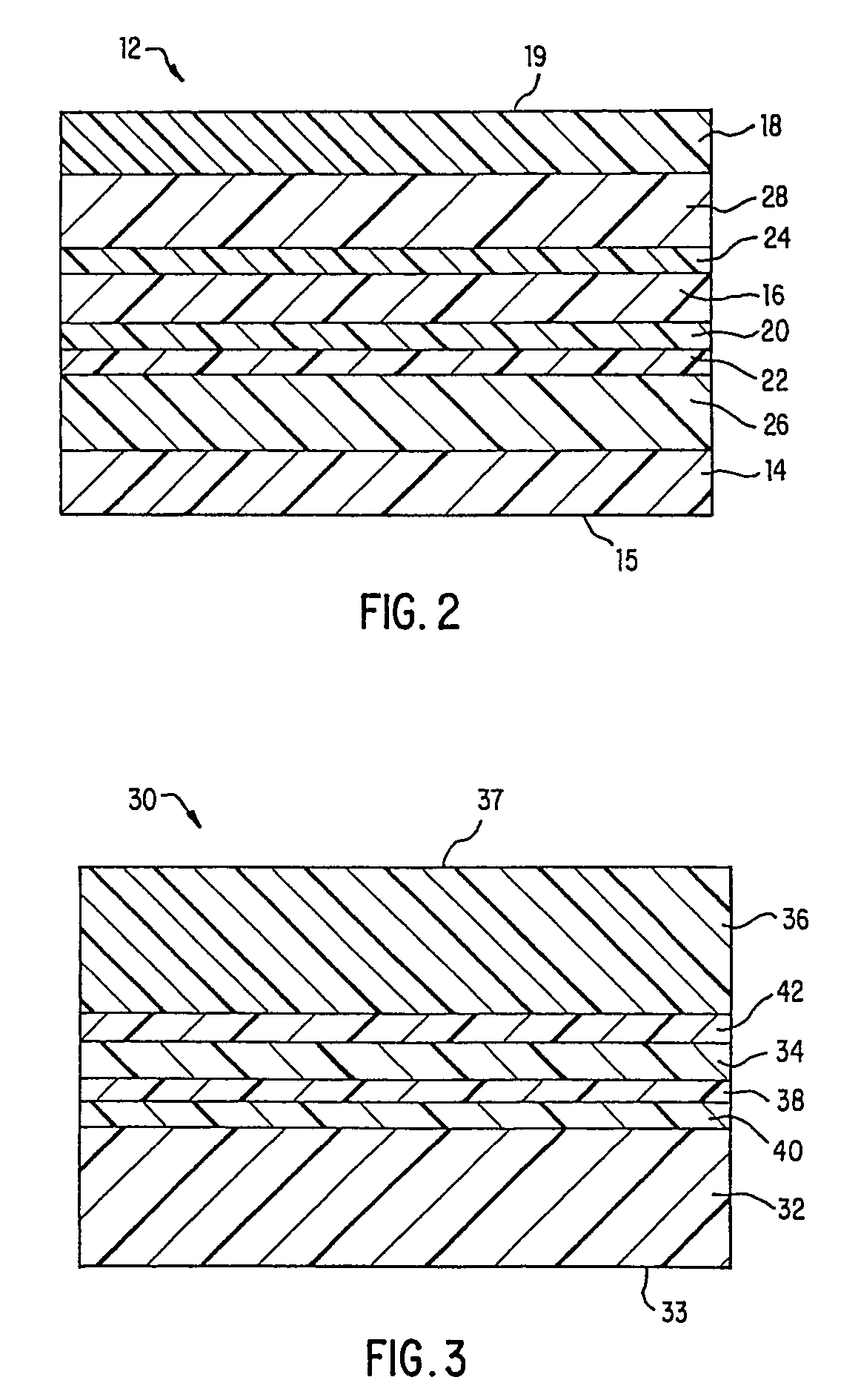Backseamed casing and packaged product incorporating same
a technology of backseamed casing and packaged products, which is applied in the direction of packaging, heating food containers, synthetic resin layered products, etc., can solve the problems of destroying the desired smooth surface, affecting the yield of products, and often not providing adequate meat adhesion to intermediate-protein-containing meat products, etc., to achieve the effect of facilitating faster backsealing speed, facilitating orientation, and improving quality
- Summary
- Abstract
- Description
- Claims
- Application Information
AI Technical Summary
Benefits of technology
Problems solved by technology
Method used
Image
Examples
example 2
[0213] A 33 / 4 inch wide (lay flat dimension) tape is produced by the coextrusion process described above in FIG. 8, wherein the tape cross-section (from inside to outside) is as follows:
[0214] 6.0 mils of LLDPE#3 (80%) and ION#1 (20%) /
[0215] 1.1 mil of anhydride grafted LLDPE#2 /
[0216] 2.0 mils of a blend of Nylon#1 (50%) and Nylon#2 (50%) /
[0217] 1.1 mil of EVOH /
[0218] 1.1 mils of anhydride grafted LLDPE#2 /
[0219] 6.0 mils of LLDPE #3,
[0220] wherein all the resins are as identified in Example 1 above. All the resins are extruded at a temperature of from about 380.degree. F. to 500.degree. F., and the die is at approximately 420.degree. F.
[0221] The extruded tape is cooled with water and flattened, the flattened width being 33 / 4 inches wide, in a lay-flat configuration. The tape is then passed through a scanned beam of an electronic cross-linking unit, where it receives a total dosage of 64 kilo Grays (kGy), which is the equivalent of 4.5 mega Rads (MR). After irradiation, the flattene...
example 3
[0225] A 33 / 4 inch wide (lay flat dimension) tubular tape is produced according to Example 1. The tape cross-section (from inside of tube to outside of tube) is as follows:
[0226] 6.0 mils of Terpolyolefin#1 /
[0227] 1.1 mil of anhydride grafted LLDPE#2 /
[0228] 2.0 mils of a blend of Nylon#1 (50%) and Nylon#2 (50%) /
[0229] 1.1 mils of EVOH /
[0230] 1.1 mils of anhydride grafted LLDPE#2 /
[0231] 6.0 mils of LLDPE #3,
[0232] wherein:
[0233] Terpolyolefin#1 is LOTADER.RTM. 3210 ethylene / butyl acrylate / maleic anhydride terpolymer, comprising about 3% anhydride functionality, obtained from Elf Atochem North America, Inc., of Philadelphia, Pa., and all the other resins are as identified in Example 1 above.
[0234] All the resins are extruded between 380.degree. F. and 500.degree. F., and the die is at approximately 420.degree. F. The extruded tape is cooled with water and flattened, the flattened width being 33 / 4 inches wide, in a lay-flat configuration. The tape is then passed through a scanned beam ...
example 4
[0238] A 33 / 4 inch wide (lay flat dimension) annular tape, was produced by the coextrusion process described above and illustrated in FIG. 5, wherein the tape cross-section (from inside to outside) was as follows:
[0239] 2.8 mils of EMAA#1 /
[0240] 3.3 mils of a blend of EVA#1 (80%) and HDPE#1 (20%) /
[0241] 0.9 mils of anhydride grafted LLDPE#2 /
[0242] 1.8 mils of a blend of Nylon#1 (50%) and Nylon#2 (50%) /
[0243] 1.1 mils of EVOH /
[0244] 1.6 mils of anhydride grafted LLDPE#2 /
[0245] 2.2 mils of a blend of EVA#1 (80%) and HDPE#1 (20%) /
[0246] 3.1 mils of LLDPE #3,
[0247] wherein:
[0248] EMAA#1 was NUCREL.RTM. ARX 84-2 ethylene / methacrylic acid copolymer, obtained from E.I. DuPont de Nemours, of Wilmington, Del.;
[0249] HDPE#1 is FORTIFLEX.RTM. J60-500C-147 high density polyethylene, obtained from Solvay Polymers, Inc., Deer Park, Tex.; and
[0250] all other resins are as identified in Example 1 above.
[0251] All the resins were extruded at a temperature of from about 380.degree. F. to 500.degree. ...
PUM
| Property | Measurement | Unit |
|---|---|---|
| Fraction | aaaaa | aaaaa |
| Fraction | aaaaa | aaaaa |
| Fraction | aaaaa | aaaaa |
Abstract
Description
Claims
Application Information
 Login to View More
Login to View More - R&D
- Intellectual Property
- Life Sciences
- Materials
- Tech Scout
- Unparalleled Data Quality
- Higher Quality Content
- 60% Fewer Hallucinations
Browse by: Latest US Patents, China's latest patents, Technical Efficacy Thesaurus, Application Domain, Technology Topic, Popular Technical Reports.
© 2025 PatSnap. All rights reserved.Legal|Privacy policy|Modern Slavery Act Transparency Statement|Sitemap|About US| Contact US: help@patsnap.com



